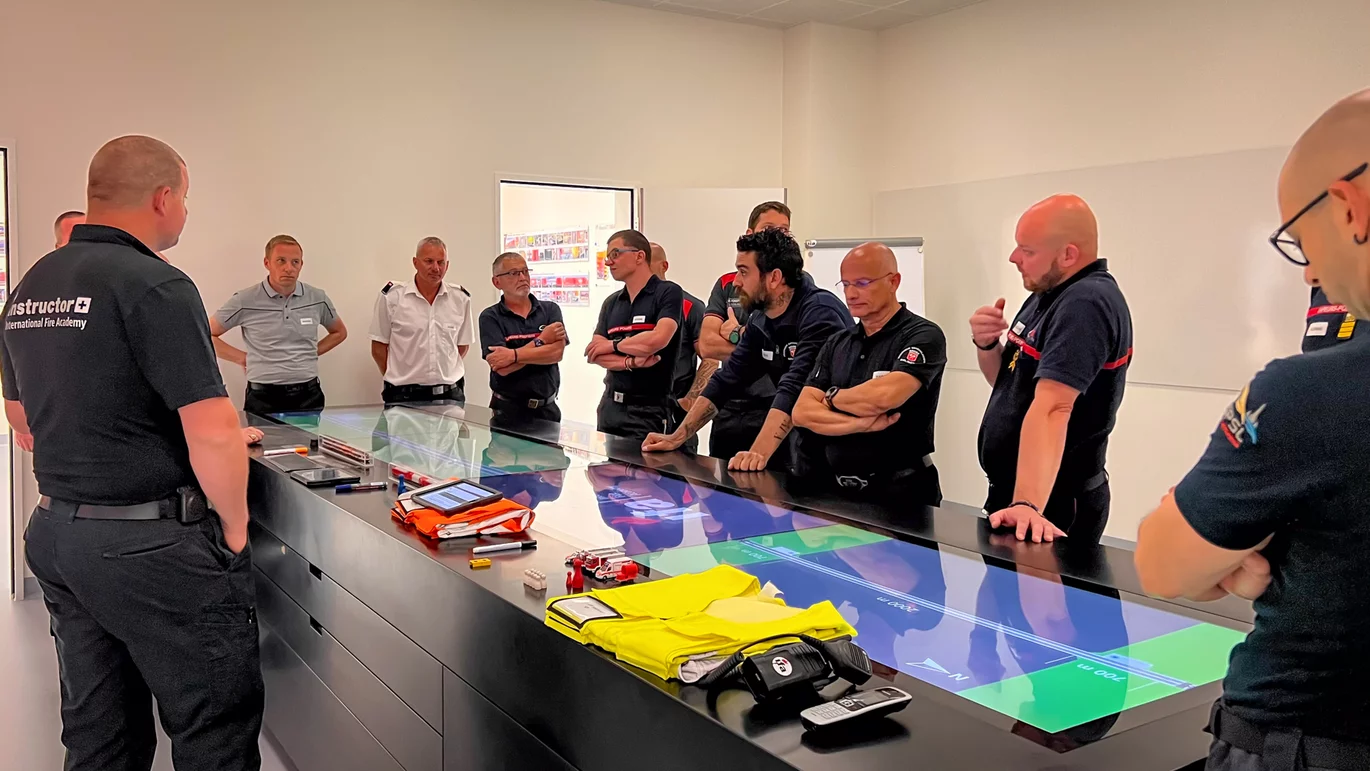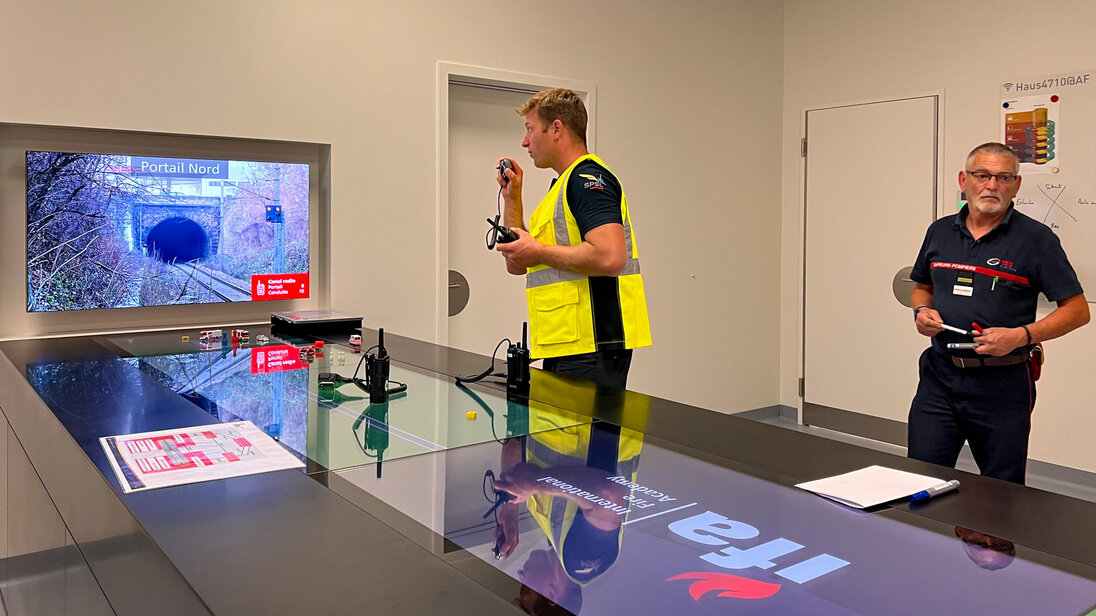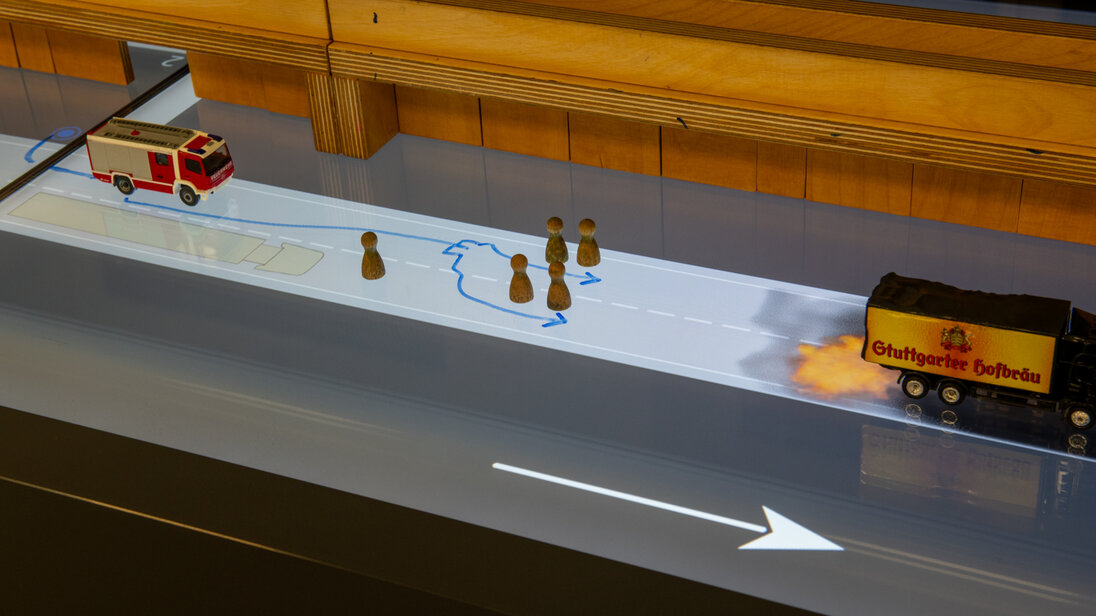The International Fire Academy has put its new Tactics Centre into operation. Larger rooms and modern tabletop exercise technology offer significantly better training conditions for tabletop exercises as an essential element of tactical training. The new Tactics Centre is also increasingly being used for valuable tactics workshops.
The core idea: three rooms
The core idea has remained the same: Three neighbouring rooms represent the two portal zones and the interior of a railway or road tunnel. The intermediate doors are closed during the tabletop exercises.
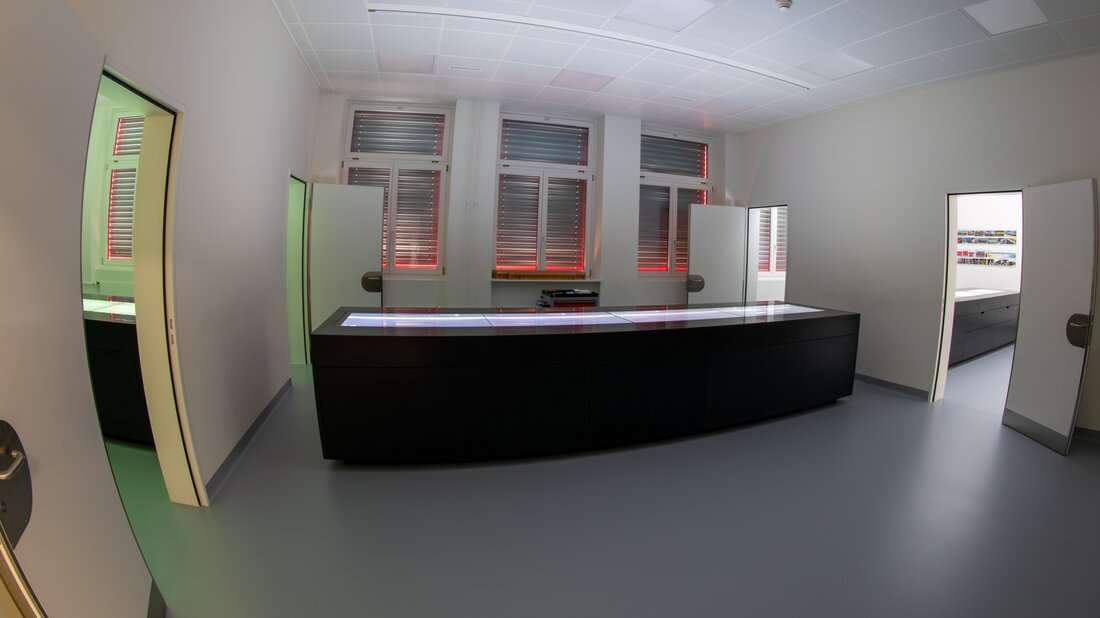
The path to the new tabletop simulation technology
In the first version of our Tactics Centre, printed tunnel plans were still used as a basis for the tactical tabletop simulations, but these could not be used to depict processes such as the propagation of smoke. From 2008 onwards, attempts were therefore made to project dynamic scenarios onto the tables from above. It proved to be difficult because the participants were blocking the beam of light. Then short-throw projectors entered the market, with which the respective scenarios could be projected from below onto a laminated glass table top. The operational measures - for example, a fire attack - could be sketched onto the glass plate. This technology has been in use since 2009 in the Tactics Centre. When a relocation to larger rooms was planned, we evaluated which technological innovations we could utilise.
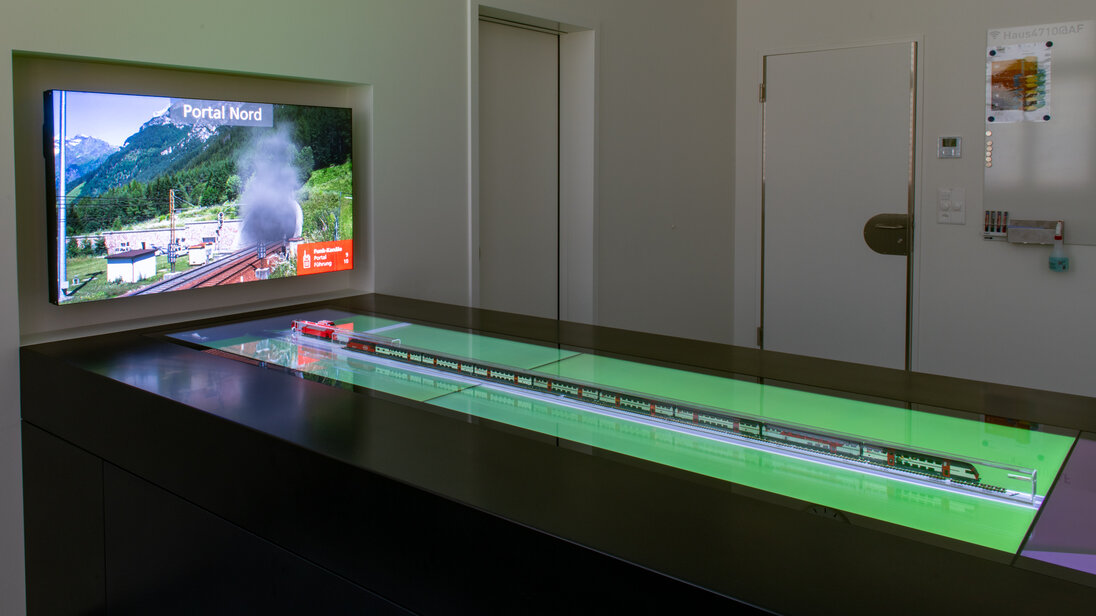
A higher resolution means more details
Thanks to the significantly higher resolution, the scenarios are clearer and easier to read, and images or presentations can also be shown in high quality. Also advantageous: Unlike the projectors, the monitors produce neither disturbing noises nor a lot of waste heat, which made the course participants in the old Tactics Centre sweat, at least on warm days.
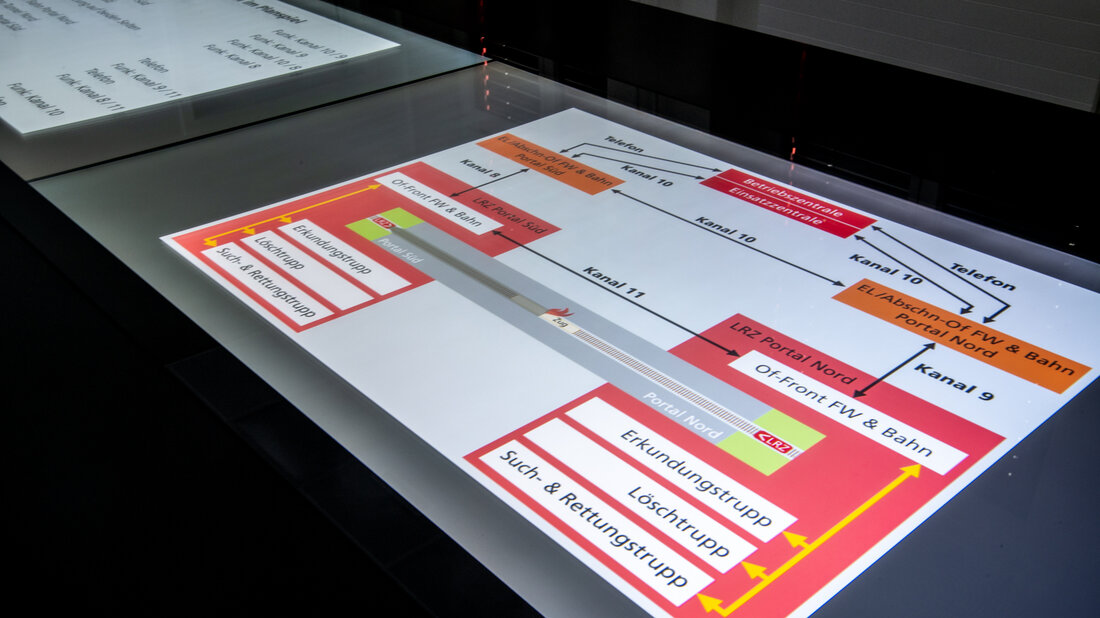
Expanded vehicle fleet
The miniature vehicle fleet was also expanded as part of the further development of the Tactics Centre. Scenarios can now be carried out with almost all types and combinations of rail and road vehicles. The emergency personnel and those affected are still represented by figures – or «Döggeli», as the Swiss call them.
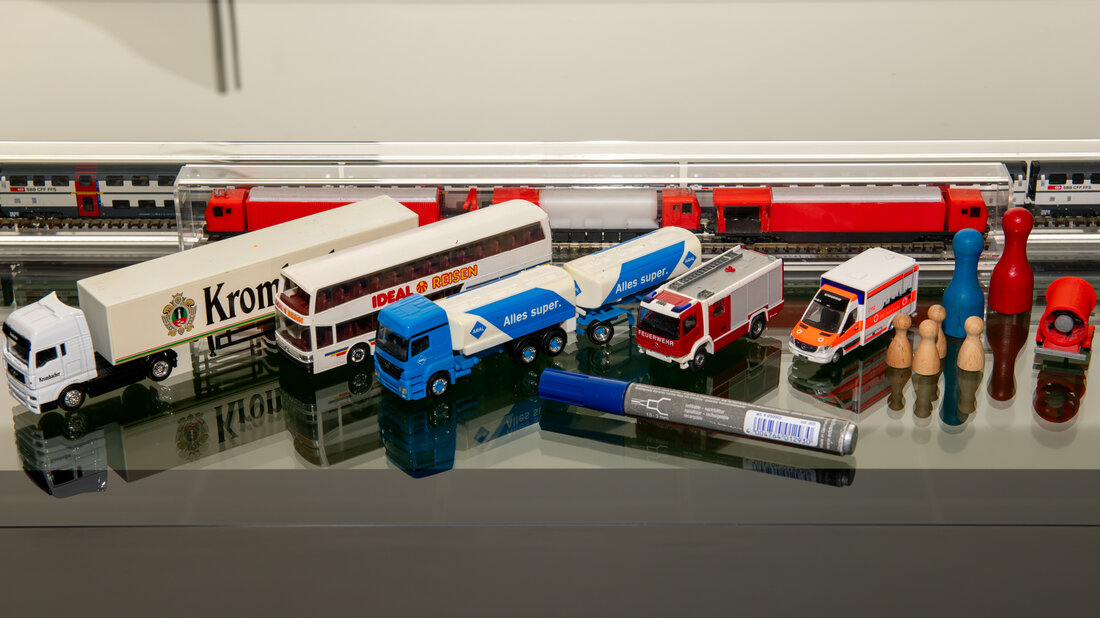
New and larger rooms
The old Tactics Centre was located on the third floor of our main building. In order to enable uninterrupted training operations during the remodelling phase, the new digital simulation technology was installed in other rooms on the second floor. At the same time, the opportunity was taken to optimise the working conditions. The new Tactics Centre offers instructors and course participants almost twice as much space as before. Especially the classroom is now considerably larger.
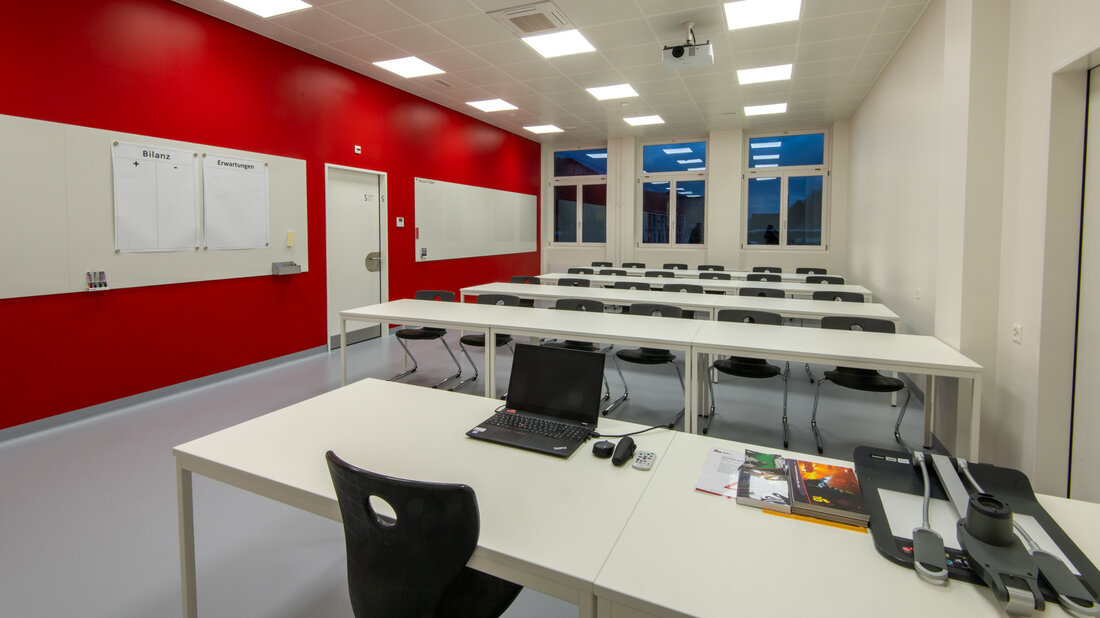
More convenient controls
All tabletop simulations are based on the so-called scenario layouts, meaning plans of road and railway tunnels with many variables such as length, number and arrangement of tubes, lanes, tracks, cross-connections and side accesses. As before, these scenario layouts are created as PowerPoint slides and displayed on the tables.
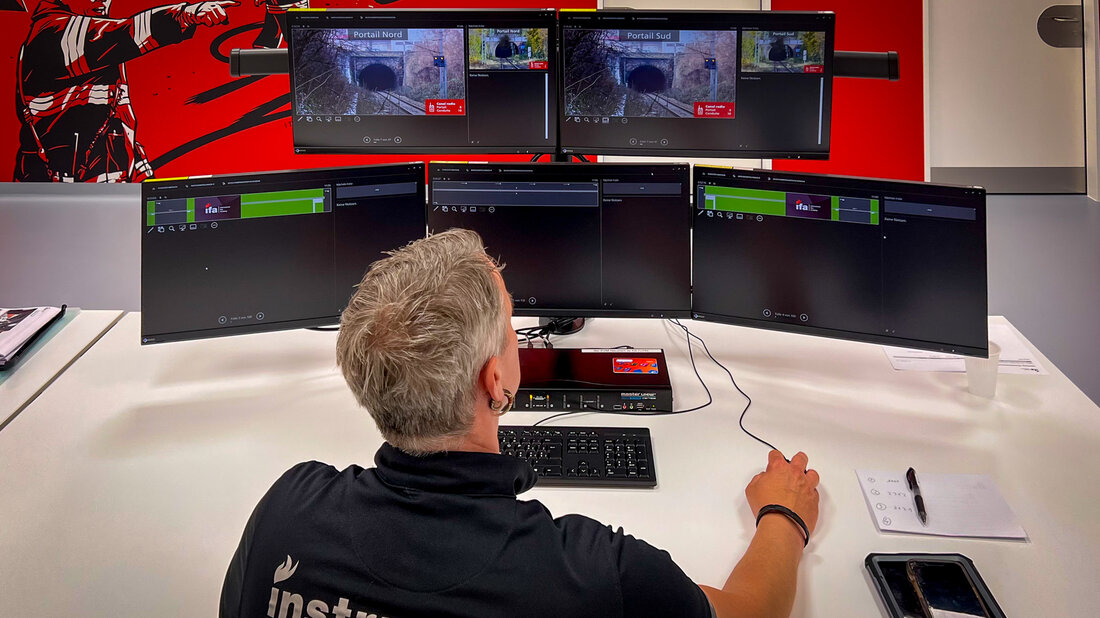
As a scenario layout has to be displayed on the four monitors of a simulation table to display the almost 5 m long scenario, the signal is split between the four monitors in a table using a so-called splitter. The three tables and the two wall monitors are controlled via a specially developed control station. From there, the instructor can simply load the required scenario layouts and display them on the monitors.
Optimised processes
By eliminating the projectors under the tables, the space can now also be utilised: Numerous drawers under the monitors provide quick access to all teaching materials and the model vehicles used for the simulations. This allows the scenarios to be quickly reorganised so that participants can play through additional scenarios in each course.
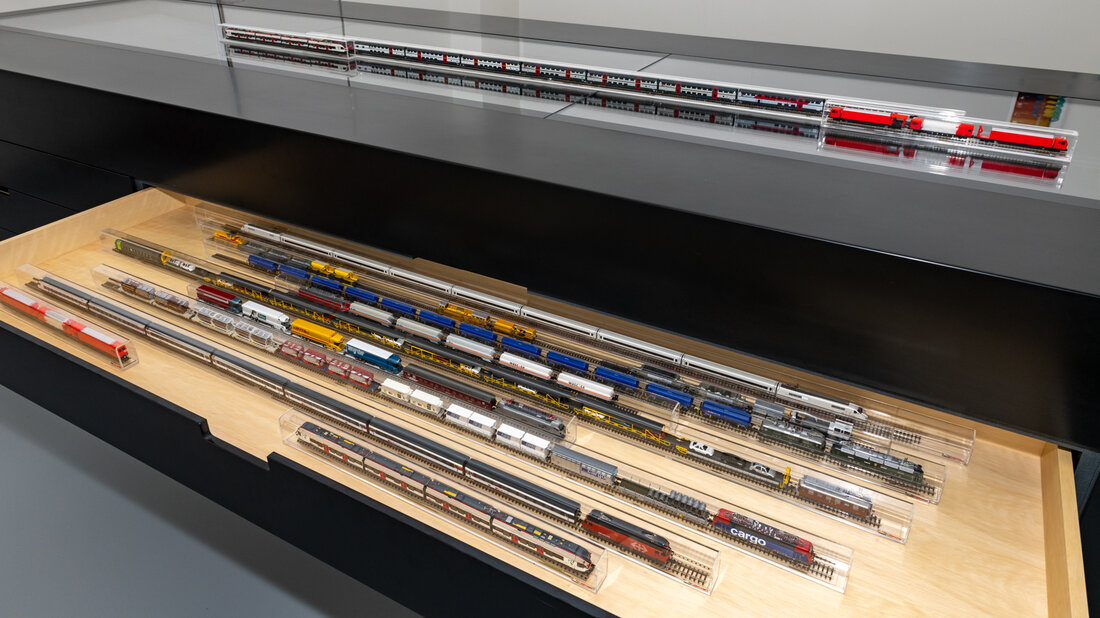
Tactics Centre as a laboratory and for workshops
The Tactics Centre primarily serves as a training facility for officers and to teach the tactical principles for firefighting in underground transport systems. But the Tactics Centre is also a laboratory: The Didactics and Development Team of the International Fire Academy used and continues to use the tactical simulation tables to develop the Swiss tunnel operations training.
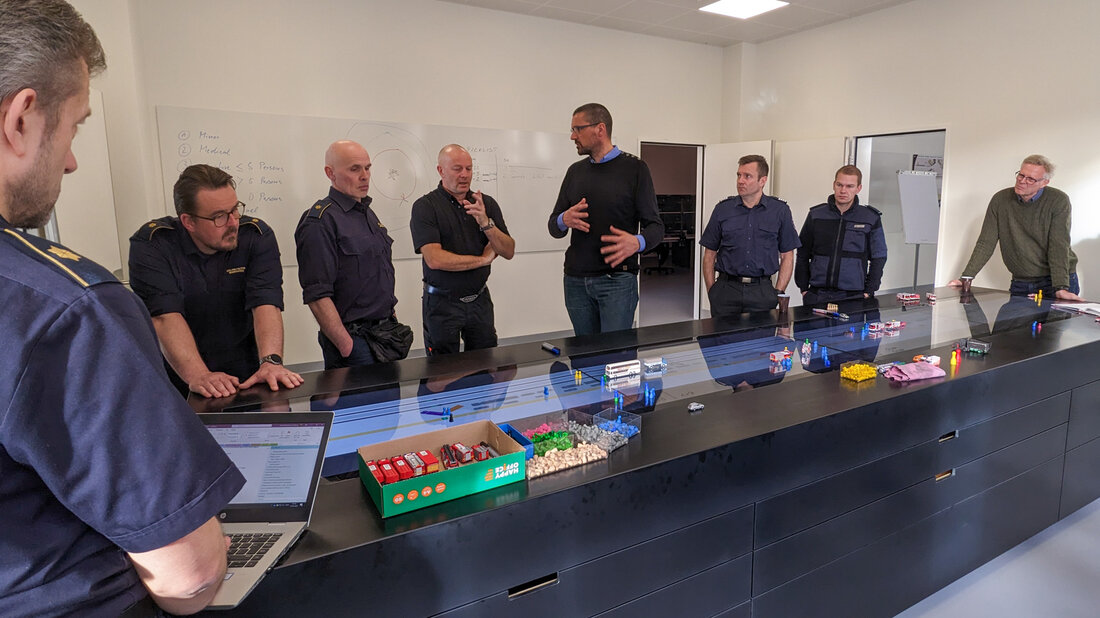
Fire services regularly develop facility-specific procedures for the tunnels in their operational area in so-called tactics workshops at the Tactics Centre. As an example, the intervention of the Swiss Federal Railways for the Gotthard Base Tunnel was developed in Balsthal. And the development of the operational concept for the Fehmarnbelt Tunnel also took place in the Tactic Centre, under the moderation of the International Fire Academy.
For such individual workshops, every tunnel system and every conceivable scenario can be presented and effectively discussed on the simulation tables instead of the standard scenarios.


